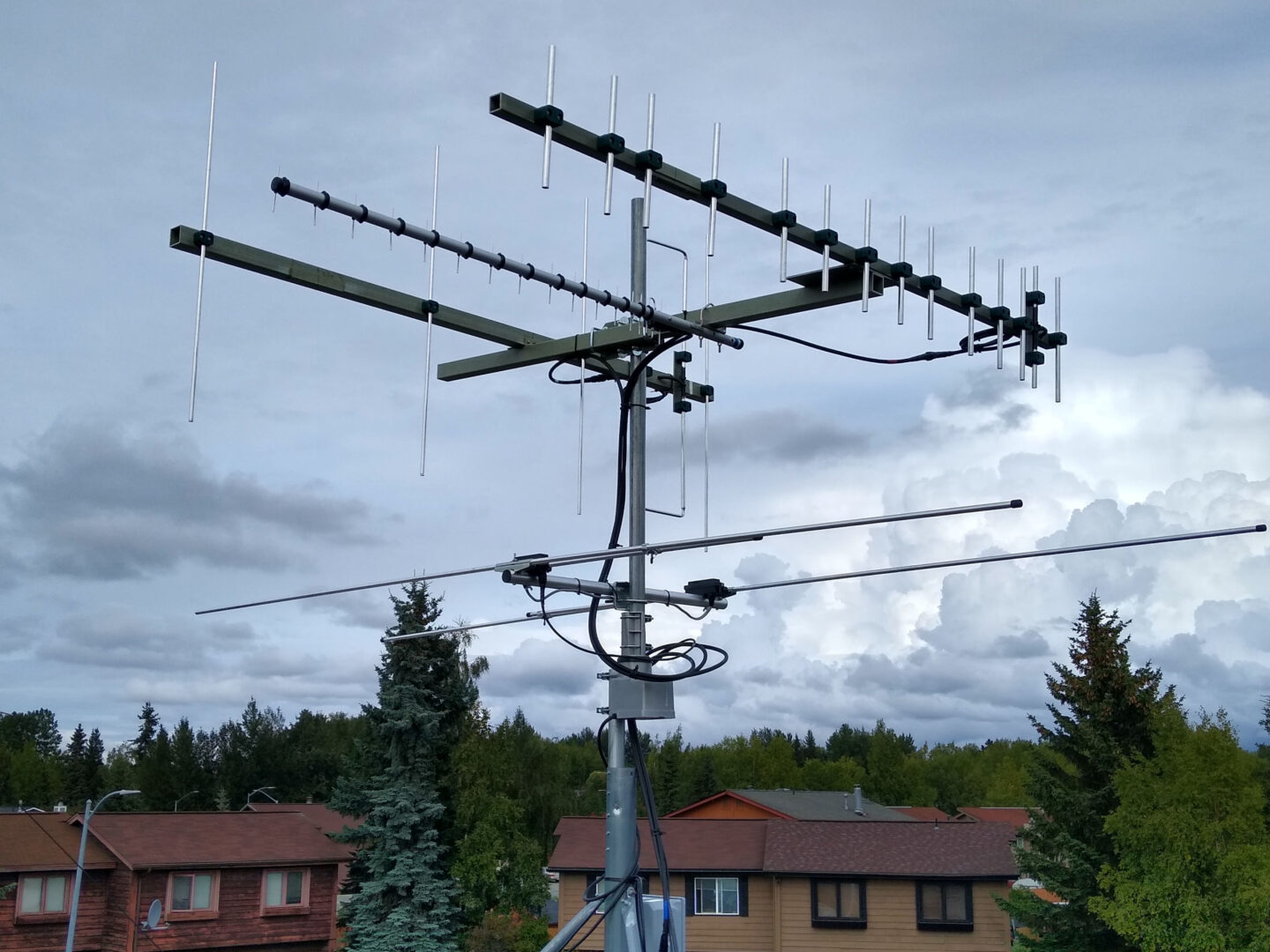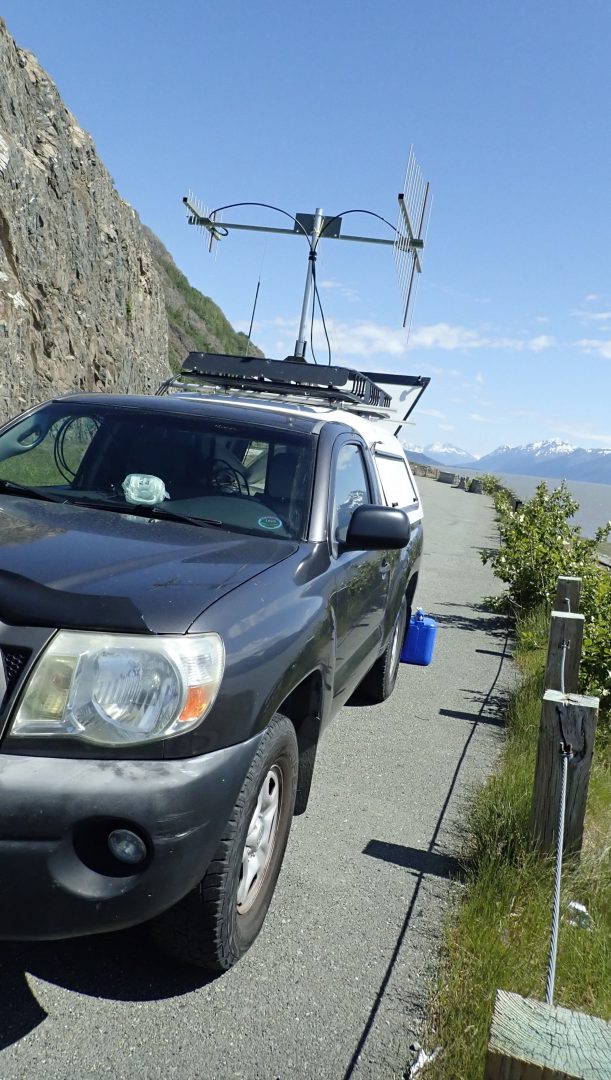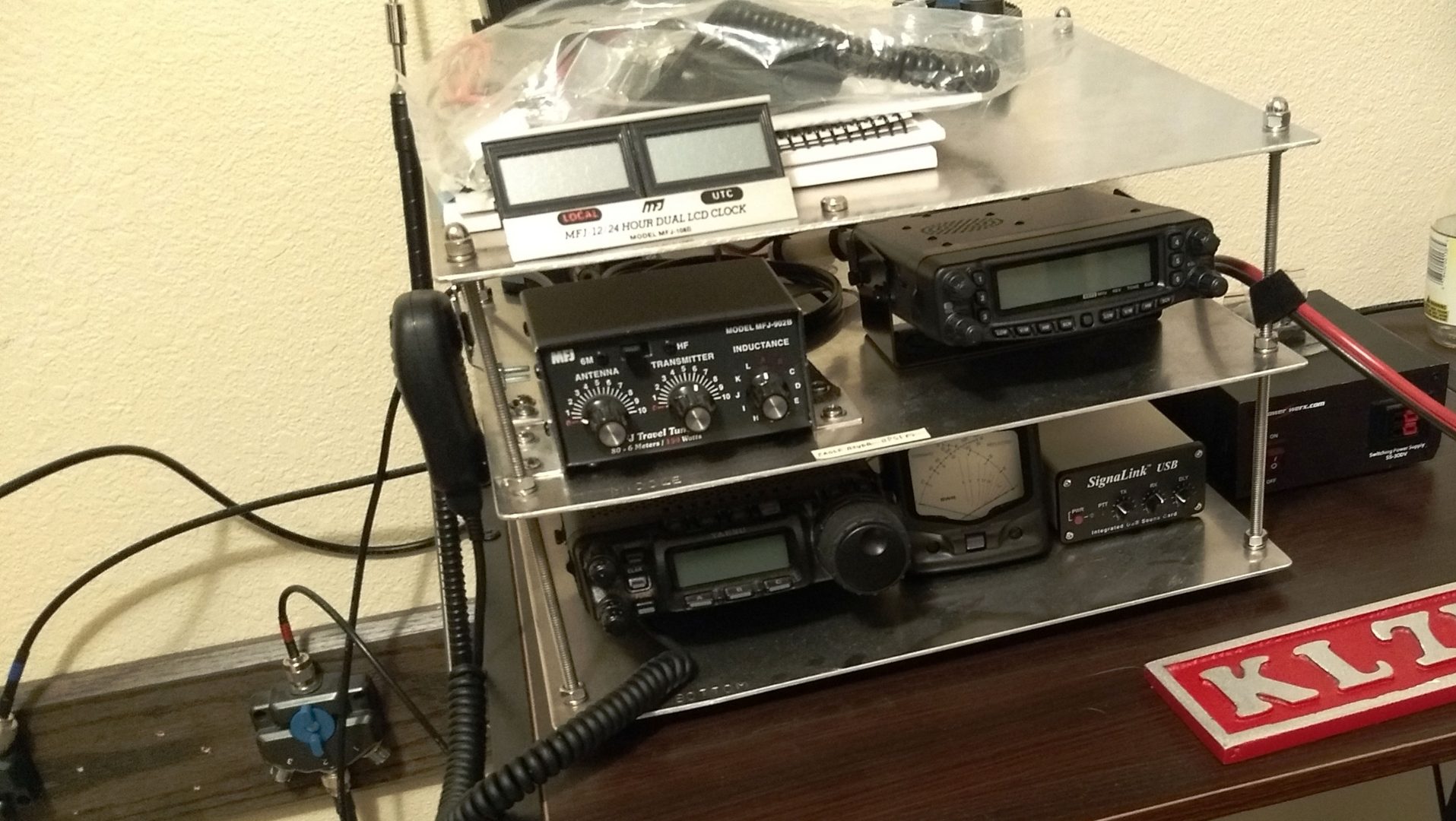Contests are what separate the men from the boys in ham radio, but that doesn’t mean that every operator enters VHF contests in the same way. View the sections below to see how I’ve entered contests over the years and get some ideas for how you might want to go about it.
Rover Stations
One of the most fun ways to do contesting is from a mobile station. This is most common in VHF/UHF contests, where the antennas are small enough that you can easily mount them on a vehicle.
At left you can see my first rover station, built around my Toyota Tacoma, with antennas for the 2 M and 70 cm band mounted on top. A rotator allows the antennas to be rotated around their common boom. Feed lines are routed to the operating station in the back.
With a station setup like this you have the best of all worlds: gain antennas to pull in weak signals, abundant field power from the vehicle, and mobility to get to the best sites.
My first rover station was a single cab truck, so I usually set up in the back. Setting up there allowed me to spread out and have a layout more similar to how the station was arranged at home.

Of course, you can also operate contests from home . . . .
Home Stations
At right is an example home station setup. Everything is mounted in an aluminum and stainless steel cage that keeps every component in place and RF-grounded. The gear is also grab-and-go ready. (You may notice that this is the same equipment as in the photo above.)
When you operate from home you have the advantage of being near all your tools in case something needs fixing, and you get to use your base station antennas.

Field Portable
Last, but not least, for the bold few you can always set up portable. Keep in mind that “portable” can have different meanings, depending on the contest rules. Basically, a portable entry will mean either, “not at home”, or “everything carried on foot”.
“Not at home”
The ARRL VHF contests have a “portable” class where you operate from somewhere other than home, but you can use a vehicle to carry you gear to the site. A common way to participate as this kind of station is to drive up to a high location and set up sizeable antennas. That gives a combination is amazing gain and amazing views.
Below are two photos showing that kind of station. My truck is not shown, but you can tell from the size of those antennas that I did not carry them up on my back.


This kind of station is a lot of fun since you can bring as much gear as you wish, transporting yourself by vehicle, but you get the advantage of a high operating location.
If you want, you can also use your vehicle as your operating station, much like when entering as a rover (see top of page).
“Everything carried on foot”
The CQ WW-VHF has categories for both rover stations (vehicle-mounted and mobile) as well as a “hilltopper” class intended for on-foot operation. The difference is that the hilltopper category is for operators who carry their gear on their backs. Below is an example of a hilltoper station I set up a few years ago:

As you can see, a hilltopper station is pretty minimal. The antennas are small, power is from light batteries, and bringing a mast is out of the question. However, this ends up being less of a disadvantage than you might think: the premise of this category is that you use your mobility to your advantage and go “where mobiles fear to tread.”
Good Fun
Getting out there and operating in a contest is a great way to find out just what you can accomplish on these bands. (I’ll give you a hint: you can do a LOT more than most amateurs think.)
If you are interested to learn more, check through the pages on this site showing the various contests I have operated in. Each page has information on how the event went, lessons learned, and useful tips to help you get started in VHF contesting.
Updated 2022-05-21



